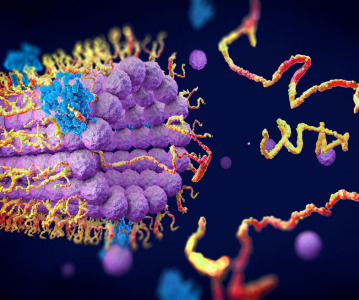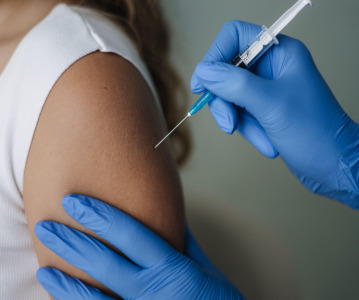New Repatha analyses show efficacy and safety across risk groups

Consistently reduced low-density lipoprotein cholesterol in patients across cardiovascular risk subgroups or with familial hypercholesterolemia.
Amgen has announced data presented at the European Society of Cardiology (ESC) Congress 2016 showing Repatha (evolocumab) consistently reduced low-density lipoprotein cholesterol (LDL-C) in patients across cardiovascular (CV) risk subgroups or with familial hypercholesterolemia (FH).
"These analyses continue to shape the clinical evidence for Repatha and help to advance our understanding of its potential to benefit patients," said Sean E. Harper, executive vice president of Research and Development at Amgen. "The data at ESC provide further insights into the impact of Repatha on multiple patient populations who are at higher cardiovascular risk and are in need of additional treatment options."
Researchers looking at the "Efficacy of evolocumab in patients across ESC/EAS CV risk subgroups," categorized a total of 2,532 patients from three, 12-week Phase III studies by the four ESC/European Atherosclerotic Society (EAS) risk criteria (very high, high, moderate and low). The analysis showed that treatment with Repatha 140 mg every 2 weeks or 420 mg monthly consistently reduced levels of LDL-C and other lipids from baseline to the mean of weeks 10 and 12 across all risk categories compared to placebo or ezetimibe controls. For example, among very high-risk patients, Repatha reduced LDL-C levels from baseline 65.2% more than placebo and 40.7% more than ezetimibe. The rates of overall adverse events were similar for the three groups, occurring in 43.1%, 50.5% and 40.8% of patients on Repatha, ezetimibe and placebo, respectively.
In another presentation, researchers looking at the "Long-term safety, tolerability and efficacy of evolocumab in patients with heterozygous familial hypercholesterolaemia," found that treatment with Repatha for 48 weeks resulted in persistent and marked LDL-C reductions in these patients. The analysis showed that Repatha plus standard of care (SoC) reduced LDL-C levels from baseline by 53.6% at 48 weeks (n=279), compared to a 2.1% increase for SoC alone. The pooled analysis included 440 patients with heterozygous familial hypercholesterolemia (HeFH) who completed Amgen's RUTHERFORD-1 (Phase II) or RUTHERFORD-2 (Phase III) trials and entered open-label extension trials (OSLER-1 or OSLER-2). Patients were randomized in the extension trials to receive SoC alone or Repatha plus SoC. Repatha was well tolerated in the extension studies with no new safety signals. The rates of overall adverse events were similar for the two groups, occurring in 80% of patients receiving Repatha and 67% of patients receiving SoC.
"These long-term data add to the growing body of evidence supporting Repatha's ability to meaningfully reduce LDL cholesterol levels in patients with familial hypercholesterolemia," said G. Kees Hovingh, Academisch Medisch Centrum, Vascular Medicine, Amsterdam, the Netherlands. "Familial hypercholesterolemia is an inherited condition that leads to high levels of LDL cholesterol from birth, and these high LDL cholesterol levels can result in increased risk for premature cardiovascular disease in patients with FH. This understanding is important for the HeFH patients in whom adequate control of their cholesterol levels with other currently approved lipid-lowering agents has been troublesome."
Additional data at the Congress included a Rapid Fire Abstract entitled, "Familial Hypercholesterolaemia Diagnosis: A Case of Missed Opportunity," which suggested that as few as 1 in 10 FH patients may be diagnosed. Patient-level data available in the Clinical Practice Research DataLink (CPRD), a UK-based general practice database, indicated a FH prevalence of 1.3 per 1,000 persons, which increased to 11.7 when missed diagnoses were counted.
Related News
-
News A Day in the Life of a Start-Up Founder and CEO
At CPHI we work to support Start-Up companies in the pharmaceutical industry and recognise the expertise and innovative angles they bring to the field. Through our Start-Up Programme we have gotten to know some of these leaders, and in this Day in the ... -
News Biopharmaceutical manufacturing boost part of new UK government budget
In their national budget announced by the UK Labour Party, biopharmaceutical production and manufacturing are set to receive a significant boost in capital grants through the Life Sciences Innovative Manufacturing Fund (LSIMF). -
News CPHI Podcast Series: The power of proteins in antibody drug development
In the latest episode of the CPHI Podcast Series, Lucy Chard is joined by Thomas Cornell from Abzena to discuss protein engineering for drug design and development. -
News Amgen sues Samsung biologics unit over biosimilar for bone disease
Samsung Bioepis, the biologics unit of Samsung, has been issued a lawsuit brought forth by Amgen over proposed biosimilars of Amgen’s bone drugs Prolia and Xgeva. -
News CPHI Podcast Series: Why we need to consider women in clinical trials
The latest episode of the CPHI Podcast Series with Lucy Chard covers women's health, specifically women's representation in clinical trials, the associated bias, and the impacts on health for this population. -
News US FDA does not approve MDMA therapy for PTSD, requests more data
The MDMA-based therapeutic developed by Lykos Therapeutics, a California-based Public Benefit Corporation (PBC), has been reviewed and unapproved by the US FDA. The regulator has requested additional phase III trial data for further safety and efficacy... -
News Novartis and Viatris latest facing lawsuit over HeLa cell misuse
Global pharmaceutical companies Novartis and Viatris are the latest hit with a lawsuit claim pertaining to alleged misuse of the ‘HeLa’ cell line from the estate of woman whose cancerous tissue cells were taken without consent. -
News Sanofi invests billions into Frankfurt insulin production site
French pharmaceutical company Sanofi have announced an investment of EUR1.3 billion at their existing BioCampus site in Frankfurt am Main for the expansion of insulin production.
Position your company at the heart of the global Pharma industry with a CPHI Online membership
-
Your products and solutions visible to thousands of visitors within the largest Pharma marketplace
-
Generate high-quality, engaged leads for your business, all year round
-
Promote your business as the industry’s thought-leader by hosting your reports, brochures and videos within your profile
-
Your company’s profile boosted at all participating CPHI events
-
An easy-to-use platform with a detailed dashboard showing your leads and performance



.png)

.png)
.png)
.png)